Abstract
1. (+)-n-Propylmercapturic acid sulphoxide, i.e. (+)-N-acetyl-S-n-propyl-l-cysteine S-oxide, was prepared as the dicyclohexylammonium salt, (−)-n-propyl-mercapturic acid sulphoxide was prepared as the free acid, and S-isopropyl-l-cysteine and isopropylmercapturic acid were also prepared. 2. The metabolism of 1- and 2-bromopropane was studied by radiochromatographic examination of the urine excreted by rats that had been fed with a diet containing 35S-labelled yeast and then injected subcutaneously with these compounds. In addition to n-propyl-mercapturic acid and 2-hydroxypropylmercapturic acid, the excretion of which has already been reported, n-propylmercapturic acid sulphoxide was shown to be a metabolite of 1-bromopropane. Sulphur-containing metabolites of 2-bromopropane, if present in the urine at all, were there in very small amounts. 3. n-Propylmercapturic acid and isopropylmercapturic acid were isolated from the urine of rats that had been injected subcutaneously with S-n-propyl-l-cysteine and S-isopropyl-l-cysteine respectively.
Full text
PDF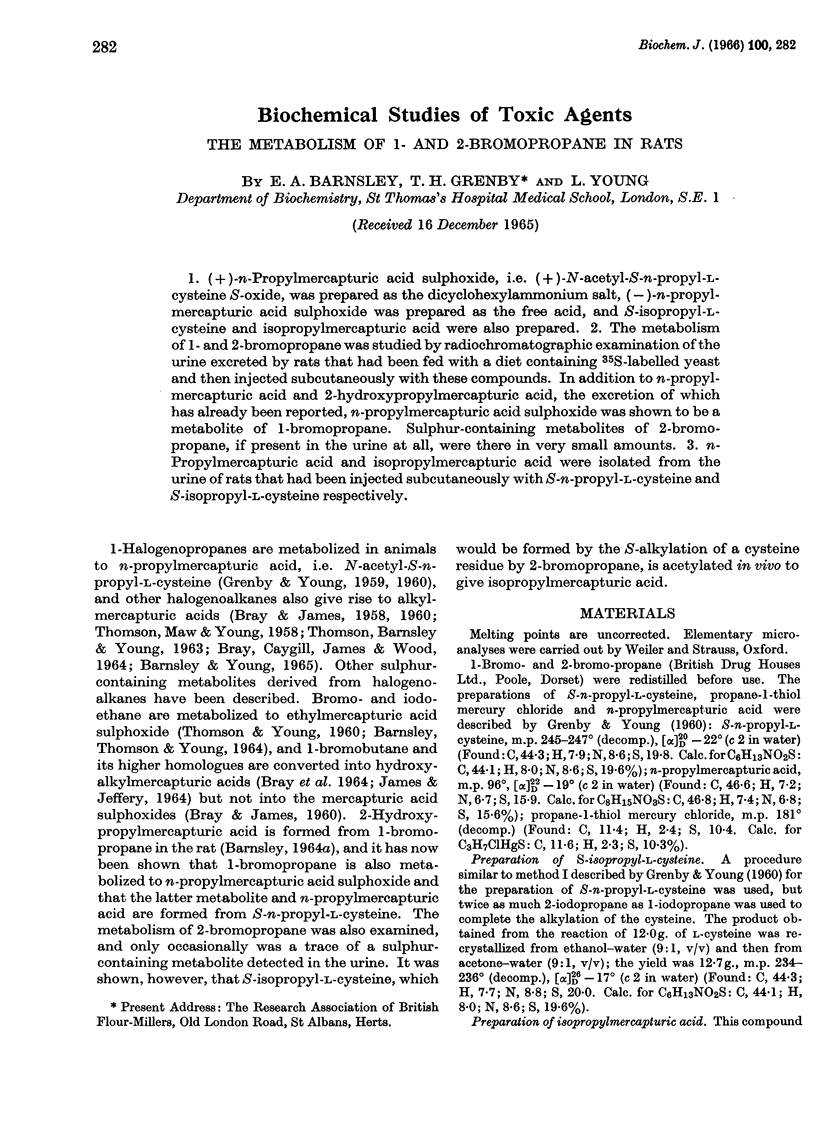
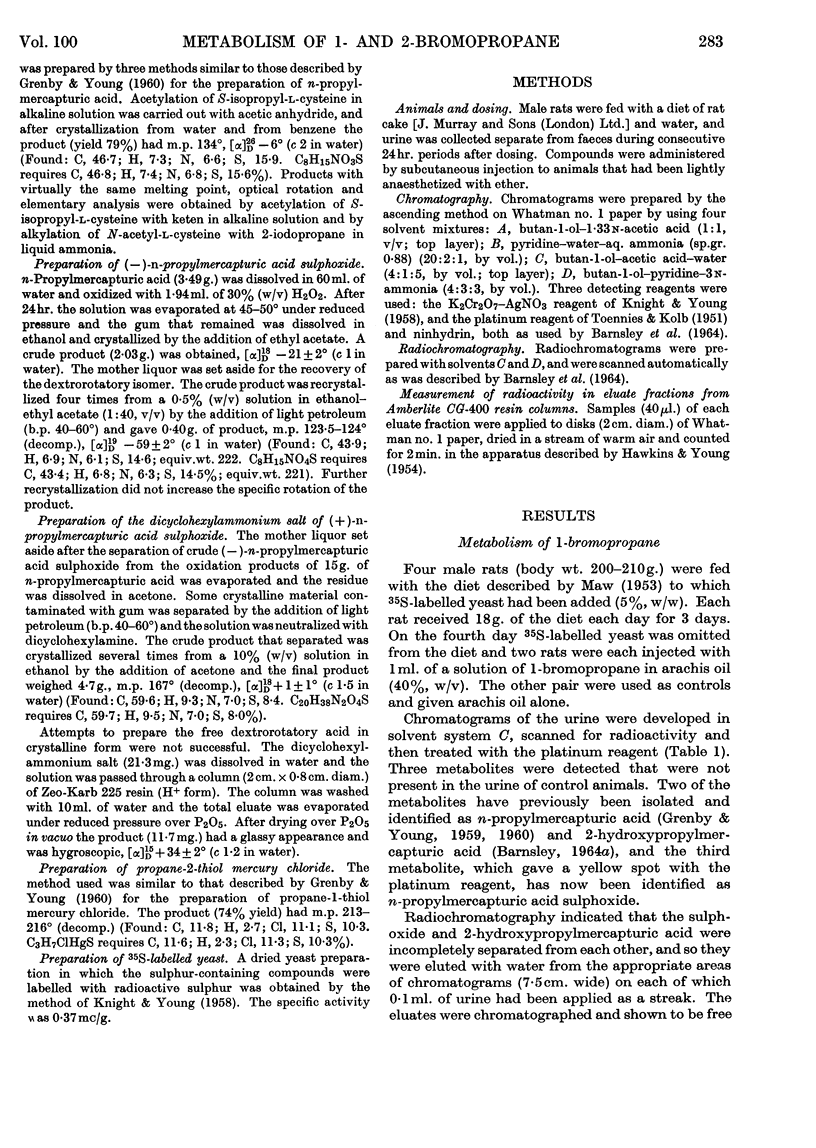
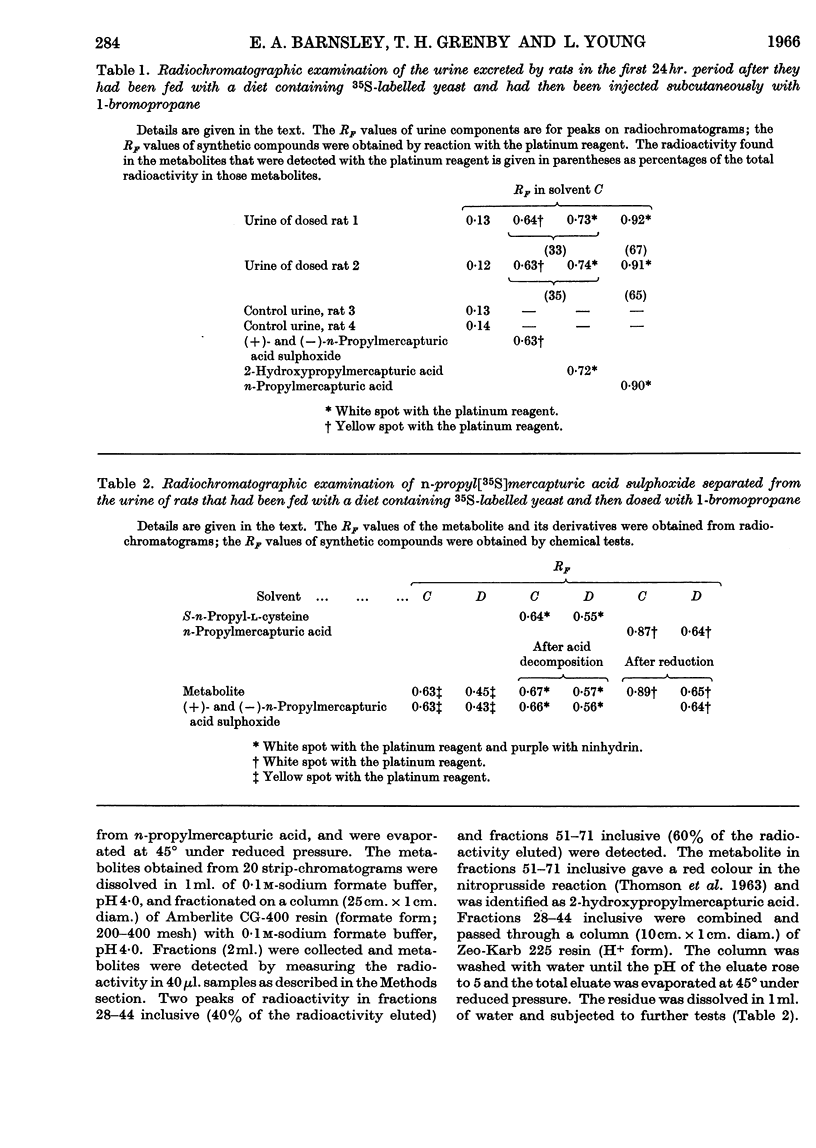
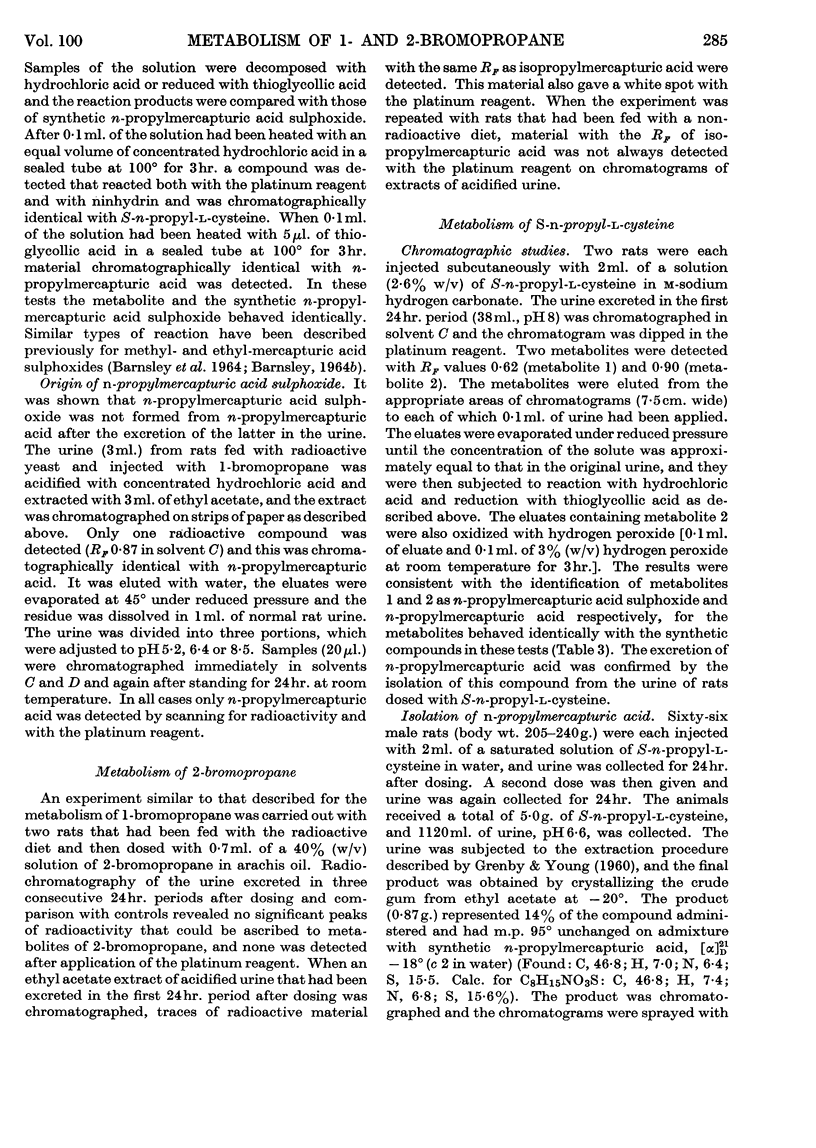
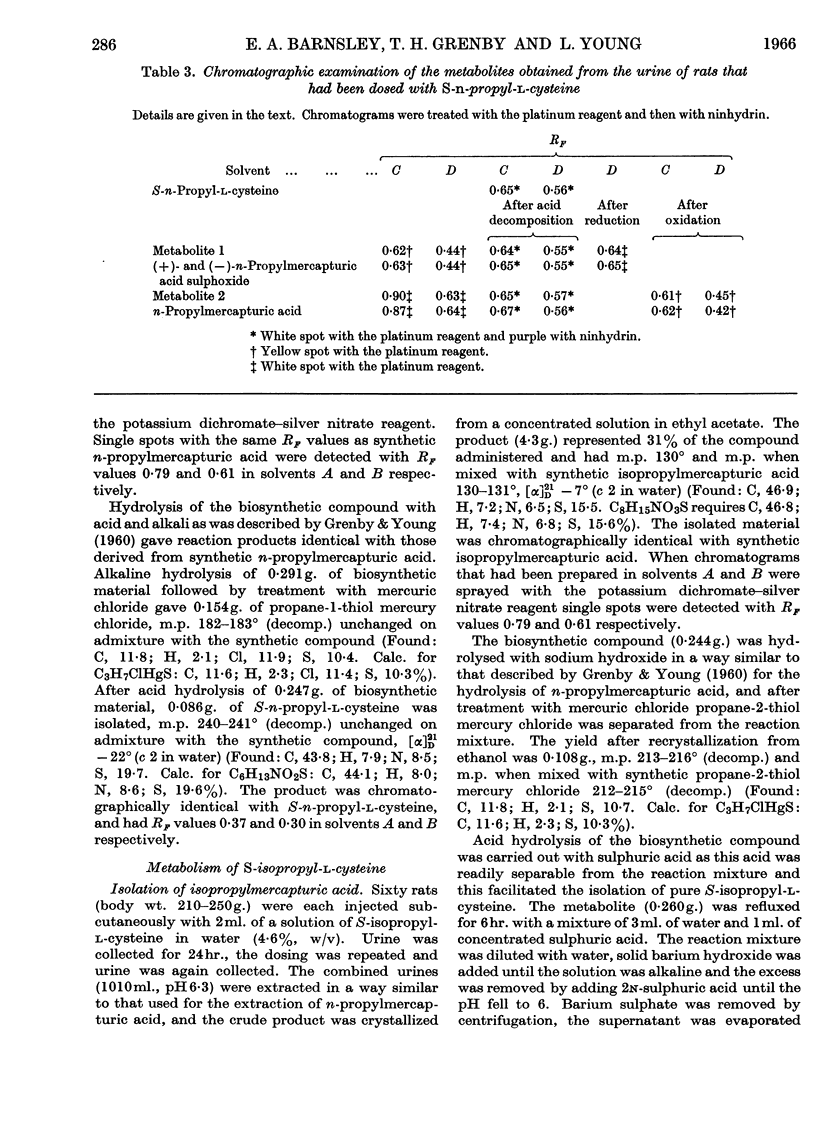
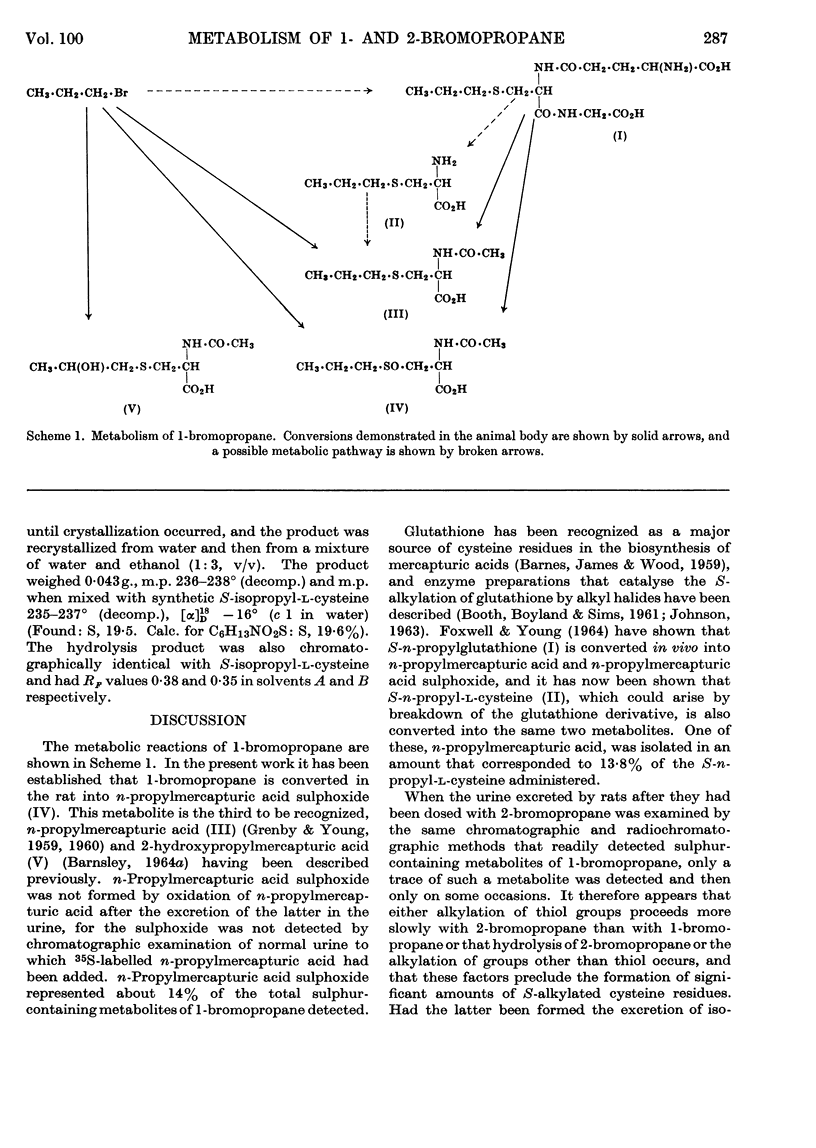
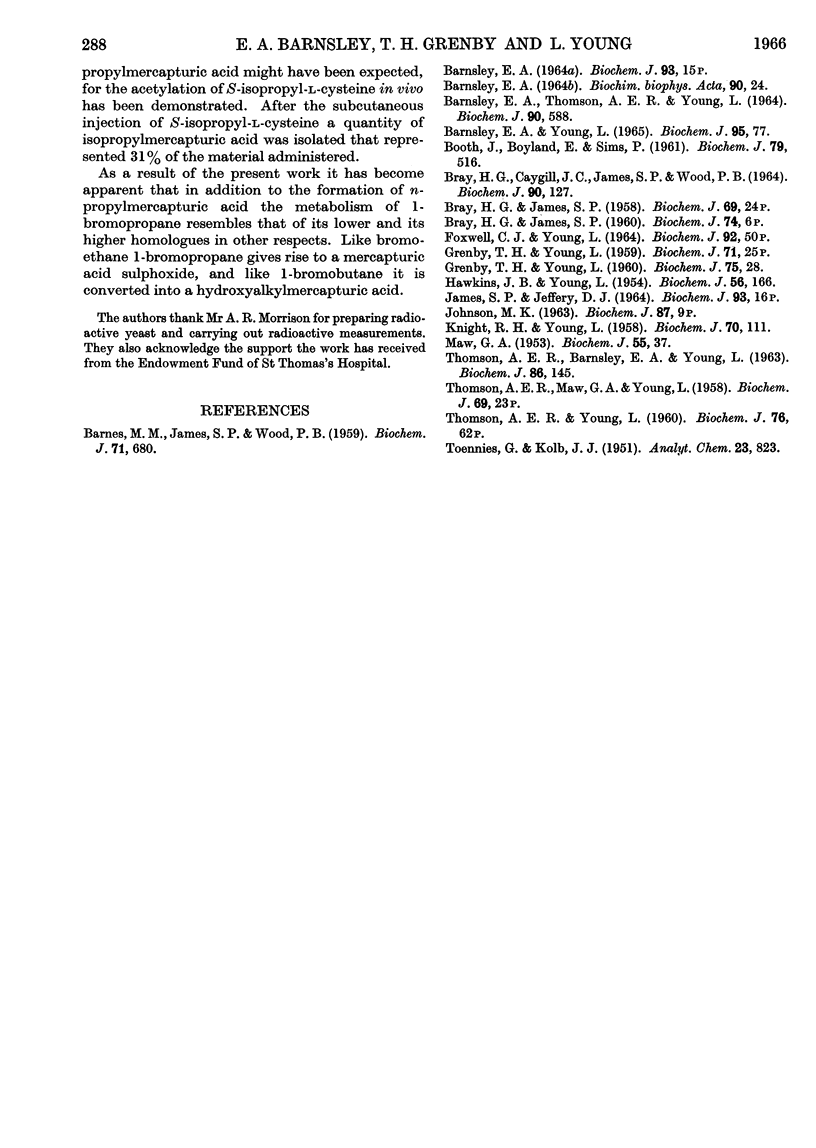
Selected References
These references are in PubMed. This may not be the complete list of references from this article.
- BARNES M. M., JAMES S. P., WOOD P. B. The formation of mercapturic acids. 1. Formation of mercapturic acid and the levels of glutathione in tissues. Biochem J. 1959 Apr;71(4):680–690. doi: 10.1042/bj0710680. [DOI] [PMC free article] [PubMed] [Google Scholar]
- BARNSLEY E. A. THE METABOLISM OF S-METHYL-L-CYSTEINE IN THE RAT. Biochim Biophys Acta. 1964 Jul 15;90:24–36. doi: 10.1016/0304-4165(64)90115-1. [DOI] [PubMed] [Google Scholar]
- BARNSLEY E. A., YOUNG L. BIOCHEMICAL STUDIES OF TOXIC AGENTS. THE METABOLISM OF IODOMETHANE. Biochem J. 1965 Apr;95:77–81. doi: 10.1042/bj0950077. [DOI] [PMC free article] [PubMed] [Google Scholar]
- Barnsley E. A., Thomson A. E., Young L. Biochemical studies of toxic agents. 15. The biosynthesis of ethylmercapturic acid sulphoxide. Biochem J. 1964 Mar;90(3):588–596. doi: 10.1042/bj0900588. [DOI] [PMC free article] [PubMed] [Google Scholar]
- Booth J., Boyland E., Sims P. An enzyme from rat liver catalysing conjugations with glutathione. Biochem J. 1961 Jun;79(3):516–524. doi: 10.1042/bj0790516. [DOI] [PMC free article] [PubMed] [Google Scholar]
- Bray H. G., Caygill J. C., James S. P., Wood P. B. Formation of mercapturic acids. 5. Metabolism of some halogenoparaffins and nitroparaffins. Biochem J. 1964 Jan;90(1):127–132. doi: 10.1042/bj0900127. [DOI] [PMC free article] [PubMed] [Google Scholar]
- GRENBY T. H., YOUNG L. Biochemical studies on toxic agents. 12. The biosynthesis of n-propylmercapturic acid from n-propyl halides. Biochem J. 1960 Apr;75:28–33. doi: 10.1042/bj0750028. [DOI] [PMC free article] [PubMed] [Google Scholar]
- HAWKINS J. B., YOUNG L. Biochemical studies of toxic agents. V. Observations on the fate of 35S-labelled arylsulphuric acids following their administration of the rat. Biochem J. 1954 Jan;56(1):166–170. doi: 10.1042/bj0560166. [DOI] [PMC free article] [PubMed] [Google Scholar]
- KNIGHT R. H., YOUNG L. Biochemical studies of toxic agents. 11. The occurrence of premercapturic acids. Biochem J. 1958 Sep;70(1):111–119. doi: 10.1042/bj0700111. [DOI] [PMC free article] [PubMed] [Google Scholar]
- MAW G. A. Observations on the late of some aliphatic sulphonic acids in the rat. Biochem J. 1953 Aug;55(1):37–41. doi: 10.1042/bj0550037. [DOI] [PMC free article] [PubMed] [Google Scholar]
- Markham R. Improvements to the ultraviolet-absorption optical system of an ultracentrifuge. Biochem J. 1963 Apr;87(1):9–11. doi: 10.1042/bj0870009. [DOI] [PMC free article] [PubMed] [Google Scholar]
- THOMSON A. E., BARNSLEY E. A., YOUNG L. Biochemical studies of toxic agents. 14. The biosynthesis of ethylmercapturic acid. Biochem J. 1963 Jan;86:145–152. doi: 10.1042/bj0860145. [DOI] [PMC free article] [PubMed] [Google Scholar]


